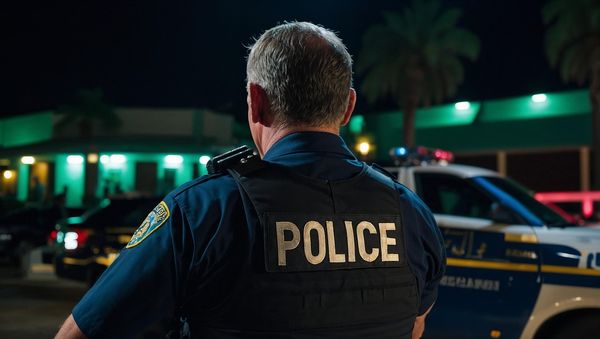Have you ever watched a film made in the last year and wondered why it sometimes looks like an Instagram video? Or, similarly, have you revisited a film from, for example, your childhood and been pleasantly surprised by how well it holds up visually. There is a reason for both things.
A content creator going by the wonderfully expressive “Sassy Grilled Cheese” went viral when he broke down why movie studios seem to now make films that look a lot worse than in the past. He posted side by side shots of different films and shared how everything from lighting to basic styling has seemingly gotten worse.
More info: TikTok
Modern films have a distinct look to them that not everyone is a fan of

Image credits: Caleb Oquendo / Pexels (not the actual photo)
So one man made a video breaking down just what has gone wrong

Image credits: sassygrilledcheese


Image credits: 20th Century Studios



Image credits: 20th Century Studios


Image credits: 20th Century Studios



Image credits: 20th Century Studios



Image credits: sassygrilledcheese

Image credits: Lê Minh / Pexels (not the actual photo)
Camera technology might be making our films look worse
Modern movies have gotten worse at looking good, and that might sound strange given all the technological advances we’ve had in recent decades. But if you’ve ever watched a film from the 1970s and noticed how rich and textured it looked compared to something shot last year, you’re not imagining things. There are several fascinating reasons why newer films often lack the visual magic of their predecessors.
The biggest culprit is digital cinematography replacing traditional film stock. When movies were shot on 35mm or 70mm film, each frame captured an incredibly detailed chemical image with a natural grain structure that gave it texture and depth. Film also handled highlights and shadows in a particular way that felt organic to our eyes. Digital cameras, even expensive ones, capture images differently. They can struggle with high contrast scenes, often blowing out bright areas or crushing dark details into muddy blacks. The dynamic range of film, meaning its ability to capture detail in both bright and dark areas simultaneously, was phenomenally good, and digital technology is only now catching up after decades of trying.
Then there’s the color grading issue. Modern films often get processed with heavy digital color grading that pushes everything toward orange and teal palettes. This started as a stylistic choice to make skin tones pop against cool backgrounds, but it’s become so overused that many contemporary films look like they were all painted with the same brush. Older films had color palettes determined largely by the film stock itself and practical lighting choices, which meant more variety and often more naturalistic looks. The Kodachrome stocks of the 1960s and 1970s produced colors that still look stunning today, with a warmth and saturation that digital grading often fails to replicate convincingly.

Image credits: Su WenHsiung / Unsplash (not the actual photo)
The way crews light and shoot movies also plays a part
Lighting, as the above video discussed, has changed dramatically too. Classic Hollywood cinematographers spent hours setting up elaborate lighting schemes with practical lights, flags, and diffusion. They created depth and dimension through careful manipulation of light and shadow. Modern productions, pressed for time and budget, often rely on flat, even lighting that’s easier to fix in post production. The problem is that you can’t really fix lighting after the fact. What looked three dimensional and moody on set in a 1940s noir film looks flat and television-like in many modern productions that plan to grade everything digitally later.
Computer generated imagery deserves some blame as well. While CGI can create impossible shots, it often lacks the physical presence of practical effects. When a spaceship in a 1970s science fiction film was an actual model photographed with real lights and a real camera, it existed in the same physical reality as everything else in the frame. Modern CGI spaceships sometimes float unconvincingly in digital space, with lighting that doesn’t quite match the live action elements. Our brains pick up on these subtle inconsistencies even if we can’t articulate exactly what feels wrong.
The shift to streaming and smaller screens has also influenced how films are shot. Cinematographers now know many viewers will watch on phones or laptops, so they avoid the kind of wide, detailed compositions that rewarded big screen viewing. Shots are tighter and simpler. The careful choreography of deep focus shots where foreground and background both tell part of the story has given way to shallow focus close ups that look fine on small screens but lack visual interest.
Not every modern film looks bad, of course. Directors like Christopher Nolan and Paul Thomas Anderson still shoot on film and insist on practical effects and thoughtful cinematography. When you watch their work, you can see the difference immediately. The texture is there, the colors feel real, and the images have weight and substance. This proves the problem isn’t that we’ve somehow forgotten how to make beautiful films. It’s that the industry has largely chosen speed and convenience over the time intensive craft that made older films so visually stunning. Economics and changing viewing habits have pushed filmmaking toward approaches that prioritize efficiency, and something valuable has been lost in the translation.
People shared their agreement with many of his points


























He added some more details later

Image credits: sassygrilledcheese




Image credits: sassygrilledcheese



Image credits: Onur Burak Akın / Unsplash (not the actual photo)



Image credits: sassygrilledcheese







